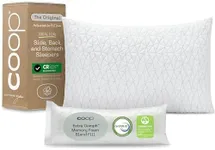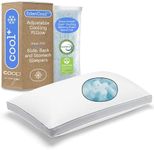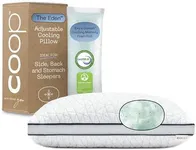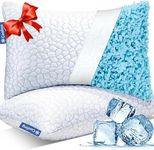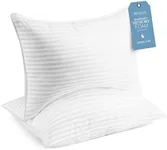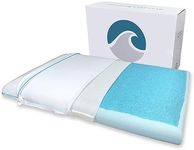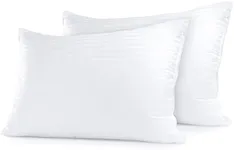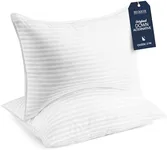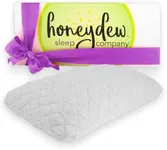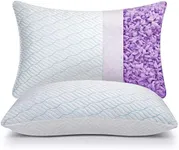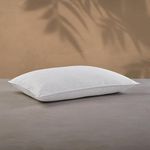Buying Guide for the Best Cold Pillows
Choosing the right cold pillow can significantly improve your sleep quality, especially if you tend to overheat at night. Cold pillows are designed to provide a cooling effect, helping to regulate your body temperature and keep you comfortable throughout the night. When selecting a cold pillow, it's important to consider several key specifications to ensure you find the best fit for your needs. Here are the main factors to consider and how to navigate them.Cooling TechnologyCooling technology refers to the method used by the pillow to provide a cooling effect. This can include gel-infused memory foam, phase-change materials, or breathable fabrics. Gel-infused memory foam pillows contain gel particles that absorb and dissipate heat, while phase-change materials can absorb, store, and release heat to maintain a consistent temperature. Breathable fabrics, such as bamboo or cotton, allow for better air circulation. When choosing a cooling technology, consider your personal preference for firmness and the level of cooling you need. If you tend to get very hot, a gel-infused or phase-change material pillow might be best. If you prefer a more natural feel, breathable fabrics could be the way to go.
MaterialThe material of the pillow affects both its cooling properties and overall comfort. Common materials include memory foam, latex, and down alternatives. Memory foam provides good support and can be infused with cooling gel, but it may retain some heat. Latex is naturally cooler and more breathable, offering a bouncier feel. Down alternatives, such as microfiber, are lightweight and breathable but may not provide as much cooling as other materials. Choose a material based on your comfort preference and any allergies you may have. If you need strong support and cooling, memory foam or latex might be ideal. For a softer, more traditional feel, consider down alternatives.
FirmnessFirmness refers to how soft or hard the pillow feels. Cold pillows come in various firmness levels, from soft to extra firm. A soft pillow conforms closely to your head and neck, providing a plush feel, while a firm pillow offers more support and maintains its shape better. Your sleeping position can guide your choice: side sleepers often benefit from a firmer pillow to keep their neck aligned, while back and stomach sleepers might prefer a softer pillow for better comfort. Consider your usual sleeping position and any neck or back issues when selecting the firmness level.
LoftLoft is the height or thickness of the pillow. A high-loft pillow is thicker and provides more elevation, while a low-loft pillow is thinner and closer to the mattress. The right loft depends on your sleeping position and personal comfort. Side sleepers typically need a high-loft pillow to fill the space between their head and shoulder, ensuring proper spinal alignment. Back sleepers may prefer a medium-loft pillow to support their head without pushing it too far forward. Stomach sleepers usually need a low-loft pillow to keep their neck in a neutral position. Consider your sleeping position and how much elevation you need for comfort.
BreathabilityBreathability refers to how well the pillow allows air to circulate, which can affect its cooling properties. A breathable pillow helps dissipate heat and moisture, keeping you cooler throughout the night. Materials like latex, bamboo, and certain memory foams are known for their breathability. If you tend to sweat or overheat at night, look for a pillow with good breathability. This can be determined by the materials used and any additional features like ventilation holes or moisture-wicking covers. Choose a pillow that promotes airflow to enhance your cooling experience.
Cover MaterialThe cover material of the pillow can also impact its cooling ability and overall comfort. Common cover materials include cotton, bamboo, and polyester blends. Cotton is soft and breathable, making it a popular choice for cooling pillows. Bamboo is naturally moisture-wicking and has excellent breathability, while polyester blends can offer durability and a smooth feel. When selecting a cover material, consider your skin sensitivity and preference for natural or synthetic fabrics. A breathable, moisture-wicking cover can enhance the cooling effect of the pillow and contribute to a more comfortable sleep.
